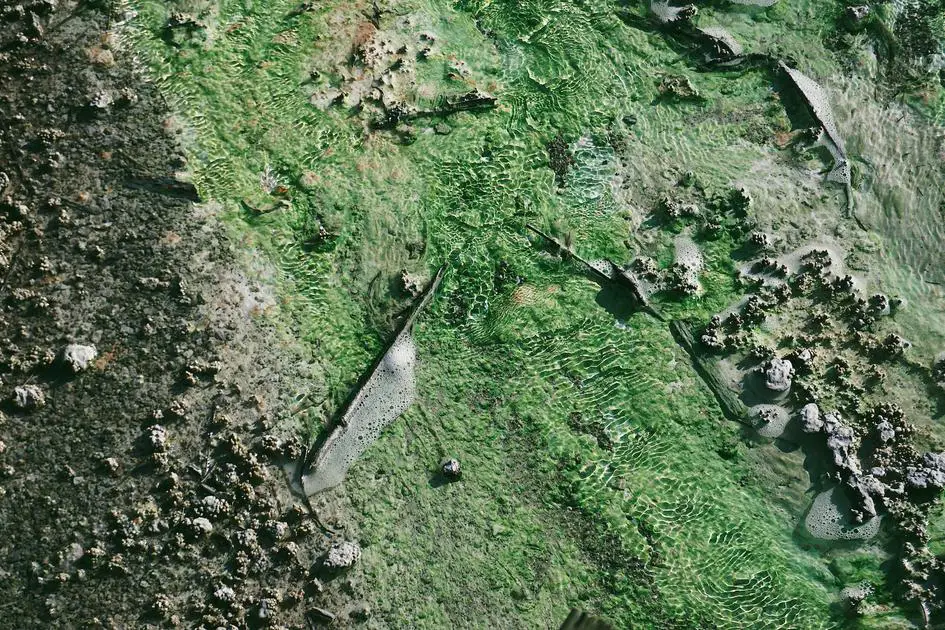In the world of aquatics, myths, and misconceptions surround the causes and prevention of algae growth. This article will clarify some common misunderstandings, focusing on the relationship between oxygen levels and algae. Furthermore, we’ll unpack the science of algae growth and provide practical tips to keep your aquarium algae-free.
Contrary to popular belief, an excess of oxygen does not directly cause algae growth. Algae, like any other photosynthetic organism, requires light, nutrients, and carbon dioxide (CO2) to thrive. However, in a well-maintained aquatic environment, oxygen keeps the system in balance by supporting beneficial bacteria that break down waste products.
So, if you’ve been scratching your head over algae problems, worry no more. Read on for details on what really causes algae growth, and how to keep it in check.
Factors that Contribute to Algae Growth
Light
Algae require light to photosynthesize and produce their food. If your aquarium or pond receives too much sunlight or artificial light, algae can grow uncontrolled. The simple solution to preventing excess light is to move your aquarium out of direct sunlight or adjust the timer of your artificial light source.
Nutrients
Algae thrive in a nutrient-rich environment with excess levels of nitrates and phosphates, usually stemming from uneaten food or organic waste in the aquarium. Pay attention to the amount of food you provide to your fish and regularly monitor water parameters, adjusting them as needed.
Carbon Dioxide (CO2)
Carbon dioxide is a natural byproduct of respiration in aquatic environments. All living organisms, including plants and animals in reef tanks, contribute to CO2 levels. Algae use this CO2 for photosynthesis, which is why high levels can lead to more growth.
Effective Strategies to Prevent Algae Growth
- Regular Water Changes. Perform routine water changes to dilute nitrates and phosphates from a build-up of waste and uneaten food.
- Proper Lighting. Adjust the duration and intensity of lighting in your aquarium to prevent excessive light exposure, which could stimulate algae growth.
- Feed Your Fish Wisely. Feed your fish in appropriate quantities, avoiding overfeeding that could lead to an increase in waste and nutrient levels.
- Add Algae-Eating Creatures. Stock your aquarium with animals that consume algae, such as snails, shrimp, or algae-eating fish.
- Clean Your Tank Thoroughly. Cleaning your aquarium regularly helps eliminate any patches of growing algae.
- Proper Water Conditions. Maintaining proper water parameters with the right filtration system can keep the population of algae under control.
Dangers of Low Oxygen Levels
While too much oxygen doesn’t cause algae, low oxygen levels can be harmful to aquatic life, leading to stress and even death in fish and invertebrates. Low oxygen levels can also stall the beneficial bacteria that manage nutrient levels and contribute to Algae blooms.
FAQ
- Do algae produce oxygen?
Yes, algae produce oxygen through photosynthesis and are considered one of the Earth’s main oxygen producers, contributing to air quality and the overall health of aquatic ecosystems.
- Are all algae harmful?
Not all algae are harmful; some types of algae are beneficial, providing food for fish and invertebrates, and serving as natural filters for water purification.
- What role do algae sinks, like algae scrubbers and reactors, play in controlling algae growth?
Algae sinks are used in aquariums to remove excess nutrients by encouraging controlled algae growth, which helps keep algae growth within the main aquarium display in check.
- How do UV sterilizers combat algae growth?
UV sterilizers kill free-floating algae by disrupting their DNA. However, they do not affect algae attached to surfaces within the aquarium.
- Can chemicals, like algaecides, be used to control algae growth?
Chemical treatments should be used cautiously and only as a last resort, as they can sometimes harm fish, invertebrates, and plants, and may disrupt the balance of the tank.
Conclusion
In summary, oxygen is not the primary factor leading to algae blooms. Algae require light, nutrients, and CO2 to prosper. To mitigate algae growth, maintain appropriate water conditions, minimize waste, and manage light exposure. By understanding the contributing factors and using a combination of preventative strategies, you can keep your aquatic environment healthy and algae-free.

